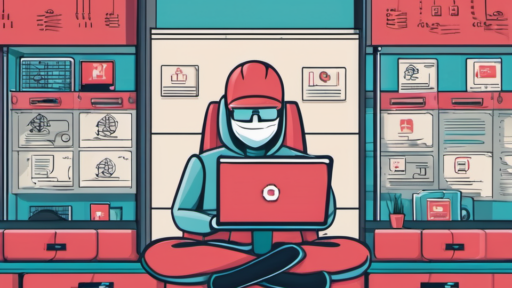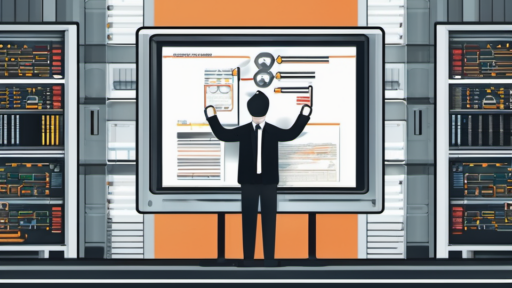Forget Everything You Thought You Knew About Supply Chain Security – This is the Future
Imagine a world where your supply chain is not just secure, but completely transparent, where you can track every component, every material, and every movement in real-time from origin to destination. No more blind spots, no more guessing, just certainty. This is the future of supply chain security, and it’s not just a dream – it’s within reach.
But how can we achieve this seemingly impossible goal? The answer lies in a visionary approach to supply chain risk management. Forget traditional, static methods; we need to embrace proactive, data-driven strategies that leverage the power of emerging technologies.
Embracing the Power of Data: Building a Secure Foundation
Data is the new currency in supply chain security, and we’re only starting to understand its potential. By harnessing the power of data analytics, real-time monitoring, and predictive modeling, we can build a more robust, resilient, and secure supply chain.
Think about it. Instead of waiting for a security breach to occur, we can proactively identify potential risks and mitigate them before they impact our operations. With real-time data insights, we can pinpoint potential vulnerabilities, predict disruptions, and optimize our security protocols for a truly proactive approach.
Leveraging Advanced Analytics for Early Detection
-
Data-Driven Risk Assessment: By analyzing historical data and identifying patterns, we can accurately assess the risks associated with different suppliers, transportation routes, and manufacturing processes. This helps us prioritize mitigation efforts and focus resources effectively.
-
AI-Powered Anomaly Detection: Using machine learning algorithms, we can train systems to detect unusual activity and anomalies, even those too subtle for humans to identify. This real-time threat detection helps us prevent security breaches before they can escalate.
-
Predictive Supply Chain Modelling: Through sophisticated simulation and predictive models, we can forecast potential disruptions and bottlenecks. This proactive approach allows us to adapt our strategies and avoid significant disruptions to the supply chain.
The Key to Resilience: Building a Connected and Collaborative Ecosystem
In today’s dynamic environment, building a resilient supply chain goes beyond internal efforts. We need to collaborate and connect with our entire ecosystem, including suppliers, distributors, logistics partners, and even customers. This requires a shift in thinking, from individual silos to shared responsibility and information-sharing.
Fostering Collaboration for Shared Success
-
Blockchain for Transparency and Traceability: Blockchain technology empowers real-time tracking and traceability of goods throughout the supply chain. This provides unparalleled visibility and transparency, enabling all stakeholders to monitor movements, track compliance, and collaborate effectively.
-
Digital Supply Chain Platforms: Connecting all parties within the supply chain through digital platforms creates a unified ecosystem. This facilitates efficient communication, streamlined processes, and collaborative risk management efforts.
-
Building Trust Through Open Communication: Sharing information and data openly builds mutual trust and strengthens partnerships. By fostering collaboration and transparency, we create a more secure and reliable supply chain for everyone.
Embracing Technological Innovation for Secure Growth
Beyond data-driven approaches, the integration of emerging technologies is crucial to building the secure and resilient supply chains of the future.
The Future is Now: Implementing Innovative Technologies
-
Internet of Things (IoT) Sensors: Deploying IoT sensors throughout the supply chain provides real-time insights into temperature, humidity, location, and other critical data points. This granular level of monitoring enables proactive intervention and improved risk management.
-
Advanced Robotics and Automation: Incorporating advanced robotics and automation can streamline logistics processes, improve efficiency, and enhance security measures. This minimizes the need for manual intervention, reducing human error and increasing operational safety.
-
Cybersecurity Solutions: Protecting the entire digital infrastructure is paramount. Implementing robust cybersecurity protocols with advanced security measures helps protect the data flowing through the supply chain, securing the entire system from cyber threats.
The New Frontier: Shaping a Secure and Sustainable Supply Chain
Embracing this visionary approach not only enhances security, but also lays the foundation for a more sustainable and environmentally responsible supply chain. By integrating circular economy principles and fostering ethical and transparent practices, we can build a future-proof system that benefits businesses, customers, and the planet.
Key Takeaways:
- Data is the new currency of supply chain security.
- Leveraging data analytics and AI drives proactive risk management.
- Building a collaborative and connected ecosystem strengthens resilience.
- Embrace emerging technologies like IoT and robotics for secure operations.
- Embrace a visionary approach to create a secure, sustainable future.
By implementing these strategies, we can build a more secure, transparent, and resilient supply chain for everyone. This is not just a vision, it’s a necessary evolution. The future of supply chain security is now in our hands.






